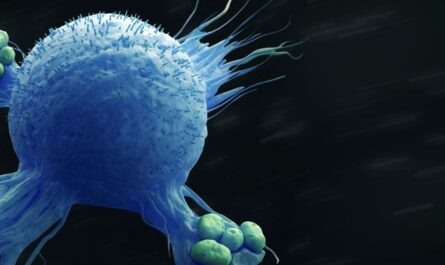History and Discovery of Bacteriophages
Bacteriophages, also known as phages, are viruses that infect and replicate within bacteria. Phages were first discovered in the early 20th century by British bacteriologist Frederick Twort and independently by French-Canadian microbiologist Félix d’Herelle. Twort was the first to observe the growth inhibition of bacteria by unknown agents, however it was d’Herelle who coined the term “bacteriophage” in 1917 and detailed their life cycle and therapeutic potential. Through his research, d’Herelle was able to isolate phages from bacteria-contaminated soil and water samples and showed they could destroy bacteria both in cultured cell media and in animals. This marked one of the earliest uses of phage therapy to treat various bacterial infections in humans.
How Phage Therapy Works
Bacteriophages work by infiltrating the bacterial cell and hijacking its protein manufacturing machinery to produce new phage particles instead. Once enough new viruses are generated within the bacterial host, it will lyse or burst open, releasing the progeny phages to find and infect new bacterial cells. Some phages may also integrate their genetic material into the bacterial chromosome using a lysogenic life cycle, leaving them dormant until induced to enter lytic replication. The key to phage therapy is finding phages that can infect and kill specific pathogenic bacterial strains without harming the patient or beneficial microbiota. Carefully isolated and cultured phages are administered orally, intravenously, or topically to seek out and destroy their designated bacterial targets.
Advantages Over Antibiotics
One major advantage of phage therapy over conventional antibiotics is its targeted nature of only affecting the intended bacterial species or strain. Unlike broad-spectrum antibiotics that indiscriminately kill bacteria, phages have a narrowly defined host range so they leave beneficial microbiota unharmed. This reduces disruptions to the normal gut flora and suppresses the evolution of antibiotic resistance in unwanted bacteria. Phages can also self-replicate at the site of infection to continually reproduce and kill colonizing bacteria until they are eliminated. And since phages are viruses, they have no toxicity to human cells or tissues at therapeutic doses.
Drawbacks and limitations in Bacteriophage Therapy
While phage therapy shows promise as an alternative or addition to antibiotics, there still remain some drawbacks limiting its widespread medical adoption. Finding suitable phages capable of infecting many strains of multidrug-resistant bacteria is challenging as different pathogenic strains may require specific phages for effective treatment. Questions around long-term phage-bacteria evolution and the emergence of phage-resistant bacterial mutants also exist. Large-scale experiments and clinical trials are still needed to establish phage dosing regimens, quality control standards, and optimum delivery methods. Regulatory approval requirements for new phage-based drugs are still being developed internationally as well. More research is warranted to address these issues before bacteriophages can reliably replace conventional antibiotics on a global scale.
Current Research and Applications
Despite these challenges, phage therapy continues to gain scientific interest. Recent studies have isolated phages effective against problematic hospital-acquired infections like Acinetobacter, Pseudomonas, Staphylococcus, and various diarrhea-causing bacteria. Phage preparations targeting multi-drug resistant strains of Staphylococcus aureus were evaluated in clinical trials. Other investigations looked at phage cocktails formulated against biofilm-forming bacterial strains difficult to treat with conventional methods alone. Developing nation clinics have also successfully uses phage therapy to great effect against antibiotic-resistant typhoid and dysentery for decades. While Western regulatory agencies remain reluctant to endorse its use, the true potential of phage therapy will likely be realized through ongoing research to optimize dosing, combat resistance, and develop well-characterized phage-based therapeutic applications.
In summary, bacteriophage therapy show strong potential as an alternative or supplement to conventional antibiotic regimens for treating bacterial infections. Their self-replicating and targeted mechanisms allow phages to circumvent many limitations of existing therapies. Continued research promoting phage isolation, clinical evaluation, efficacy against emerging pathogens, and resolving regulatory challenges will help realize the applications of phage therapy and deliver new options to combat the rapidly growing crisis of antibiotic resistance globally. With dedicated scientific progress, bacteriophages may reemerge as a viable treatment modality alongside or replacing traditional antimicrobials in medical practice in the future.




